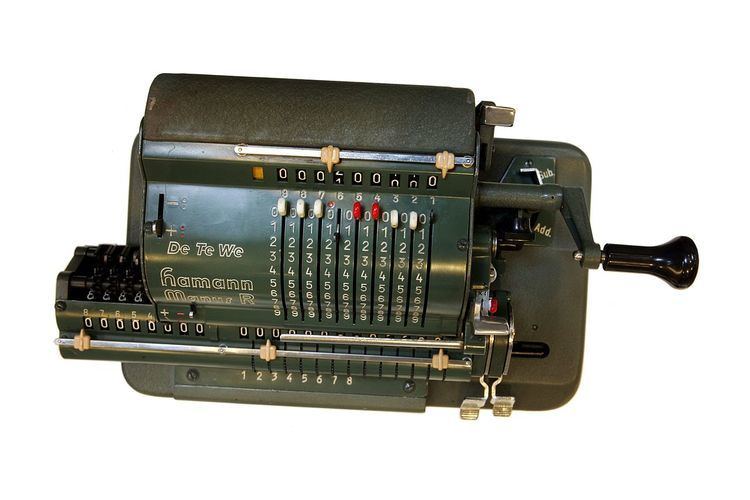 | ||
A mechanical computer is built from mechanical components such as levers and gears, rather than electronic components. The most common examples are adding machines and mechanical counters, which use the turning of gears to increment output displays. More complex examples could carry out multiplication and division—Friden used a moving head which paused at each column—and even differential analysis. One model sold in the 1960s calculated square roots.
Contents
Mechanical computers can be either analog, using smooth mechanisms such as curved plates or slide rules for computations; or digital, which use gears.
Mechanical computers reached their zenith during World War II, when they formed the basis of complex bombsights including the Norden, as well as the similar devices for ship computations such as the US Torpedo Data Computer or British Admiralty Fire Control Table. Noteworthy are mechanical flight instruments for early spacecraft, which provided their computed output not in the form of digits, but through the displacements of indicator surfaces. From Yuri Gagarin's first manned spaceflight until 2002, every manned Soviet and Russian spacecraft Vostok, Voskhod and Soyuz was equipped with a Globus instrument showing the apparent movement of the Earth under the spacecraft through the displacement of a miniature terrestrial globe, plus latitude and longitude indicators.
Mechanical computers continued to be used into the 1960s, but were quickly replaced by electronic calculators, which—with cathode-ray tube output—emerged in the mid-1960s. The evolution culminated in the 1970s with the introduction of inexpensive handheld electronic calculators. Mechanical computers were ailing in the 1970s and dead by the 1980s.
Examples
Electro-mechanical computers
Early electrically powered computers constructed from switches and relays rather than vacuum tubes (thermionic valves) or transistors (from which later electronic computers were constructed) are classified as electro-mechanical computers. Examples include:
